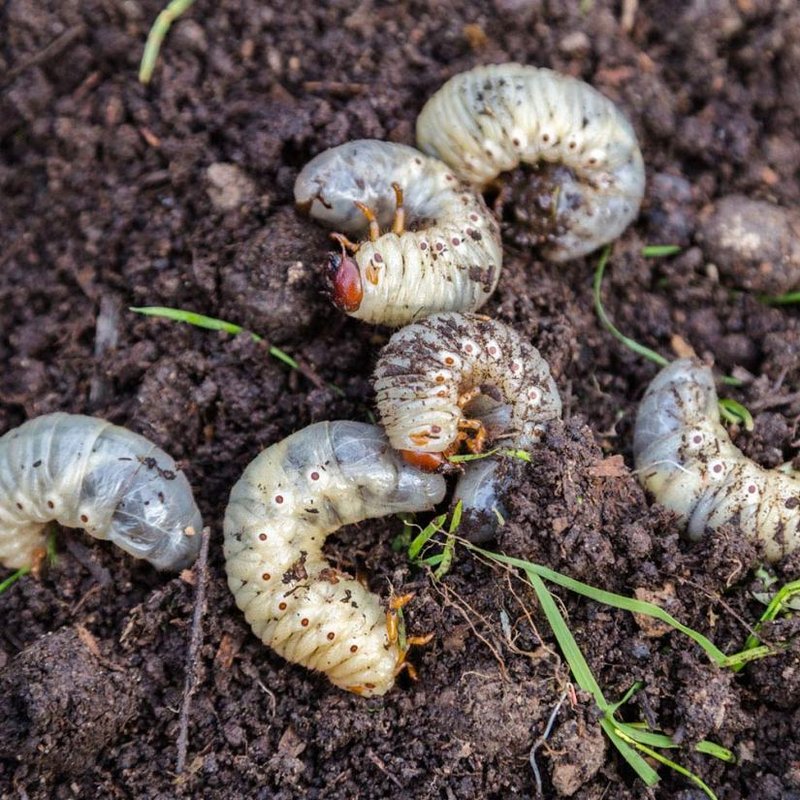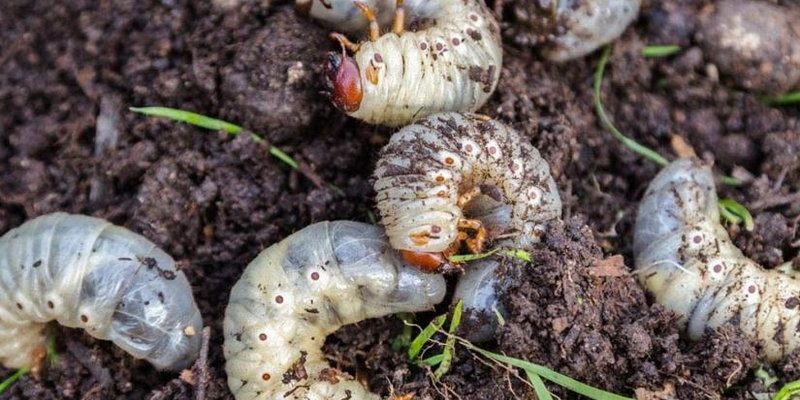
So, what’s the deal with grub worms? Think of them as the busy workers beneath the soil. They’re not just about feasting on roots; they can help break down organic matter and enrich the soil. Let me explain how incorporating grub worms can lead to a healthier garden and why they shouldn’t be dismissed right away.
What Are Grub Worms?
Grub worms are the larval stage of beetles, usually belonging to the Scarabaeidae family. They might look like little white or cream-colored C-shaped critters. Some of the most common types include the Japanese beetle and the June beetle. You might be wondering how these creatures go from larva to full-blown beetles, right? Well, they burrow underground, munching on grass roots or organic material before they pupate into adult beetles.
While they’re often viewed as a nuisance, it’s essential to understand their life cycle. In the early part of their life, they’re busy breaking down decomposing plant matter, which enriches the soil. This is where the *sustainable* part comes into play. When they turn into beetles, they do start to cause some trouble in gardens, but their larval phase contributes positively to soil health.
How Grub Worms Contribute to Soil Health
So, why should you consider grub worms in your sustainable gardening efforts? The answer lies in the *benefits* they bring to your soil. When they feed, they break down organic materials like decaying leaves and roots, transforming them into humus.
Humus is like a luxury layer of soil that provides nutrients to plants. It helps retain moisture and promotes a thriving ecosystem for other beneficial organisms. This means more nutrients for your plants, which translates into healthier vegetables and flowers. Here’s a friendly tip: a soil rich in humus can also reduce the frequency of watering since it holds moisture effectively.
Furthermore, grub worms help aerate the soil. As they burrow through the ground, they create channels that improve soil structure. Good drainage and aeration are crucial for root health, letting plants breathe and grow better. So, it’s not all doom and gloom when it comes to these little guys!
Managing Grub Worms in Your Garden
You might be thinking, “Okay, that sounds good, but how do I keep them from wreaking havoc on my precious plants?” Here’s the thing: managing grub worms is about balance. You don’t necessarily need to eliminate them entirely; instead, focus on keeping their population in check.
First, make sure to monitor your garden regularly. Check for signs of damage, like wilting plants or patches of grass that are thinner than others. If you spot these signs early on, you can take action before they cause significant damage.
Consider implementing organic methods to control their population. For example, beneficial nematodes are tiny worms that naturally prey on grub worms without harming your plants. You can introduce them to your garden during the spring or fall when the soil temperature is just right. With some patience and observation, you can keep a healthy balance between the helpful and harmful critters in your garden.
Grub Worms and Composting
Another fun aspect of grub worms is their connection to composting. If you’re gardening sustainably, you might already be composting kitchen scraps and garden waste. Grub worms can help with the breakdown of these materials in the compost pile.
Here’s how it works: when you add organic waste to your compost, grub worms will naturally be attracted to the decaying matter. As they munch away, they contribute to the composting process. Plus, they add nutrients to the compost, creating a rich mixture to use in your garden later on.
When you use quality compost enriched with the help of grub worms, the result is healthy, productive plants. Their contribution doesn’t stop in the compost bin; it carries over into your garden beds!
Grub Worms vs. Other Soil Dwellers
You might be curious about how grub worms compare to other soil dwellers, like earthworms or ants. It’s like having a whole neighborhood of critters, each playing their unique role in your garden ecosystem.
Earthworms are fantastic for aerating the soil and breaking down organic matter, just like grub worms. However, earthworms focus primarily on soil health, while grub worms mainly benefit the breakdown of plant materials. Having both in your garden creates a well-rounded ecosystem, where each type of worm complements the other.
Ants, on the other hand, can sometimes work against you. While they can help with aeration, their presence can indicate issues like over-watered plants. In contrast, grub worms usually don’t signal trouble but rather a potential for enriching your garden.
By understanding these differences, you can make informed decisions on how to maintain your garden’s health and productivity.
Building a Sustainable Garden with Grub Worms
Integrating grub worms into a sustainable garden isn’t just about accepting their presence; it’s about actively promoting a healthy environment for them to thrive. Start by focusing on organic gardening practices.
This means avoiding synthetic pesticides and herbicides, which can harm beneficial organisms in the soil, including grub worms. Instead, embrace natural pest control methods and utilize companion planting to create a balanced ecosystem. Strong, healthy plants can withstand infestations better than weak ones.
Additionally, keep your soil rich in organic matter and practice crop rotation. This way, you’ll not only help grub worms, but also other beneficial microorganisms that can aid in plant growth. A few small steps can lead to a healthier garden overall!
As you embark on your gardening journey, remember that grub worms aren’t just pests; they can be valuable allies in creating a sustainable garden. By understanding their role in the ecosystem, managing their population, and promoting healthy soil, you can cultivate a thriving environment for your plants.
So, the next time you see these little critters in your garden, consider all the benefits they bring. With a bit of care and patience, you can create a sustainable garden that not only looks good but also contributes positively to the environment. Happy gardening!

